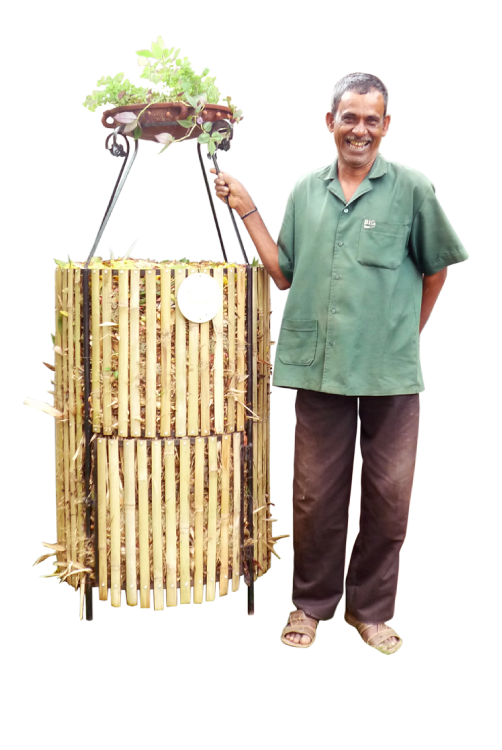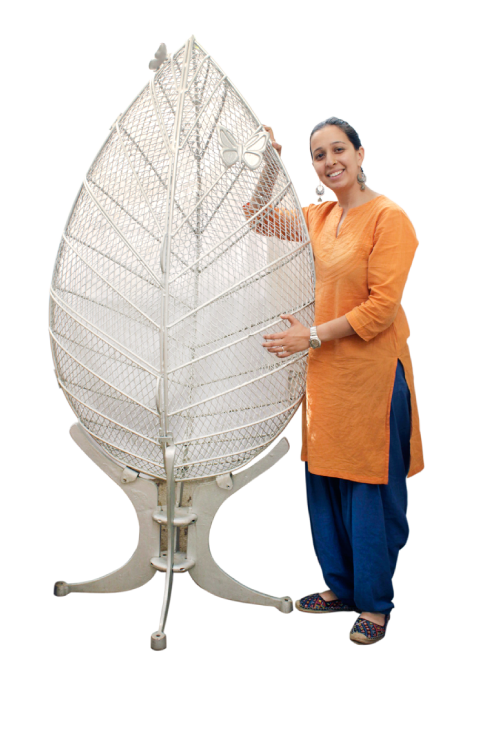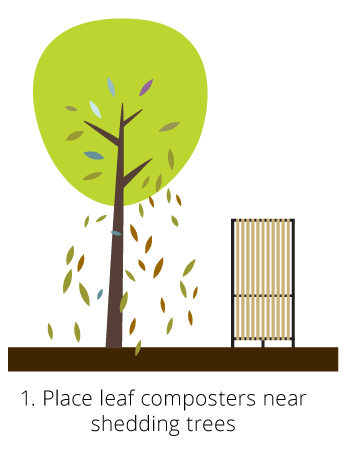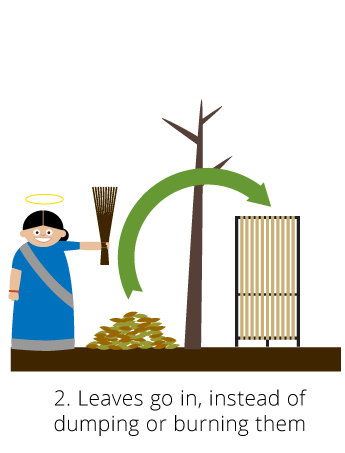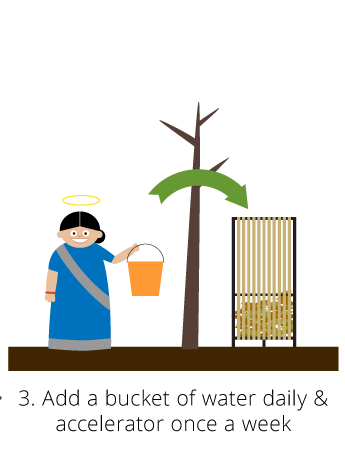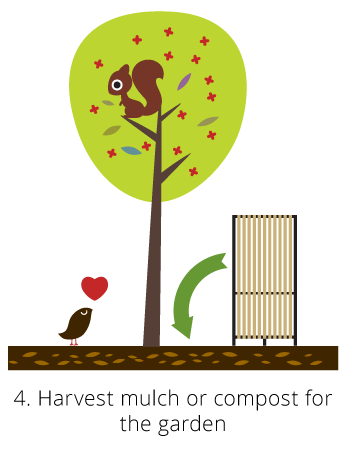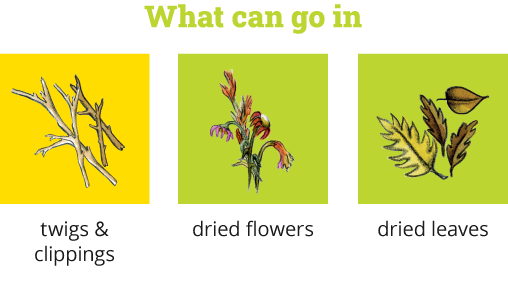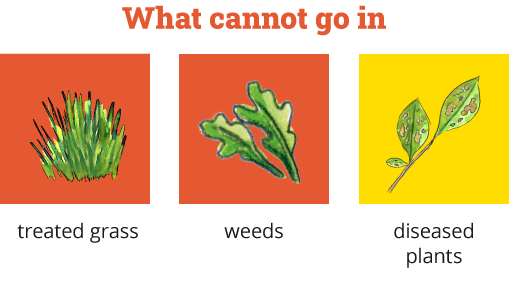Save leaves, the Daily Dump way
Daily Dump Leaf Composters add character & nutrition while saving labour!
Make your own leaf composter!
Yes!
We've worked out every small detail and are happy to share
our steel leaf composter drawings with you, dear earth traveller!.
If you want to sell these, then please do pay us our design fee.
Drawings are free only for personal use..
Ingredients for leaf composting
Put them together
How can I use decomposed leaves?
-
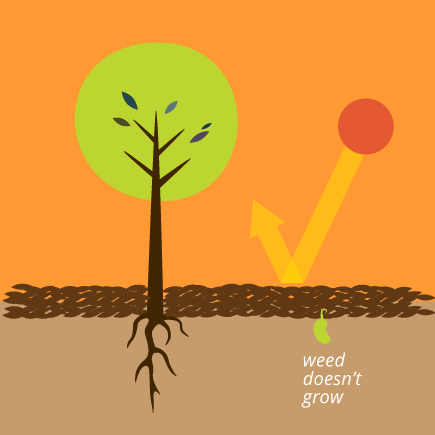
Leaf mulch
Half composted leaves and garden litter which is used to cover beds is called mulch. You can makes dried leaves into mulch in 6 months in our leaf composters. Mulch acts as a barrier between the elements and soil and is beneficial in many ways.
-
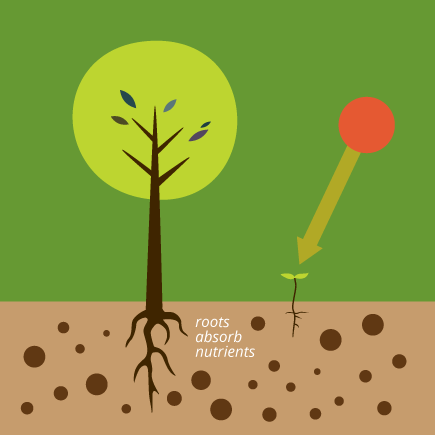
Leaf compost
Fully composted leaves and garden litter is called leaf compost. This is used as a natural soil amendment. Good leaf compost takes 12 months to form in our leaf composters. Leaf compost will allow the roots of the plants to absorb more nutrients, and is a great soil amendment below the ground.

LEAF BENEFITS
What do I gain?
-
Provides nutrition
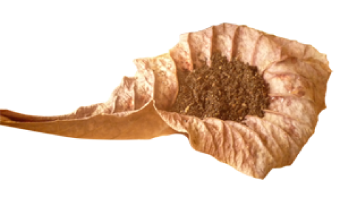
Leaves are rich in Nitrogen, phosphorus, potassium & trace elements. When mulched and composted, the action
of microbes helps to transfer these nutrients back to soil. -
Controls weeds

Leaf mulch helps prevent the growth of weeds. Add a thick layer (2-3 inches) to gardens to reduce use of herbicides. Leaf mulch also returns nutrients to soil, so your lawns require less fertilizer & additives.
-
Conserves water
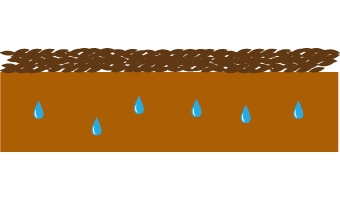
Leaf mulch helps retain moisture in soils. When soil is covered with leaf mulch, the mulch lowers the soil’s exposure to sun and wind which reduces evaporation.
-
Prevents erosion

Mulch provides a protective layer. It prevents the compaction & erosion of soil due to wind & rain.
-
Increases fertility
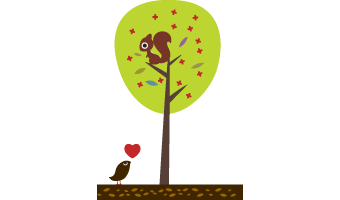
Leaf compost improves the texture and fertility of the soil. It allows plant roots to absorb nutrients from the soil better.
-
Saves money

Eliminates the costs of haulage and fuel to landfill, saving money, time & making you a more responsible earth inhabitant.
Watch Leaf Composters at work
The Daily Dump way simply makes sense!
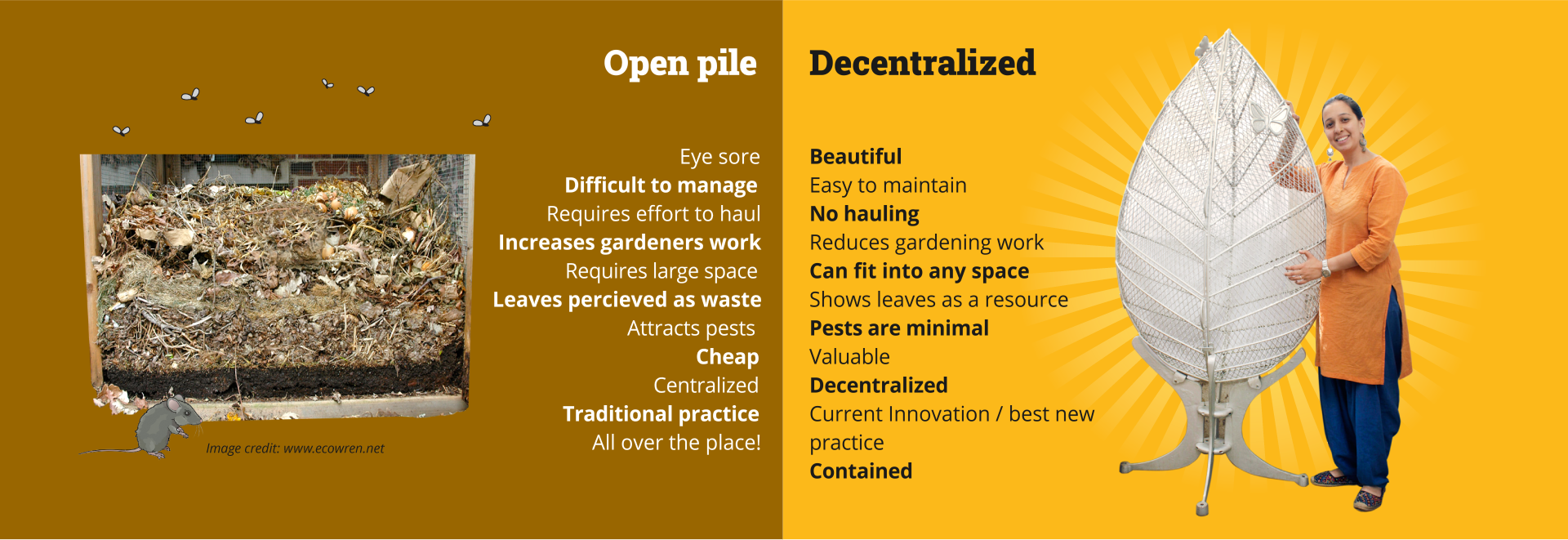
Create a ‘Leaf Safe Zone’
For anyone who wants to do a leaf composting project beyond the home, here is an idea we have tried and would love to see implemented in urban areas. A leaf safe zone is best done in your own your street, in your neighborhood park or gated community.
A leaf safe zone means - a space where no leaves or garden litter is burned or taken to landfill or dumped in drains.

FAQs about Saving Leaves
Answer
The amount of toxins released from uncontrolled low temperature burning in open lots depends on the composition of the waste being burned, the temperature of the fire and the supply of oxygen.
The major problem with open burning is that it is rarely carried out at high enough temperatures to destroy toxic substances. Under calm weather conditions, toxins released from this type of uncontrolled low temperature burning can remain at dangerous levels near the ground for a long time - causing high amount of contamination at source. Not healthy at all - what do you think ?
Answer
No, a leaf composter in action will not produce any bad odour. You can proudly place a leaf composter on your front lawn - no problem!
Answer
Insects are part of the composting process, they will be around to help decomposition and feed off the decaying leaves. However, the pile is not going to harbour mosquitoes, houseflies or other disease carrying pests.
Answer
Yes you can add twigs and branches but make sure you break them down into smaller bits. Palm fronds are best cut into smaller bits before adding it to the composter. The very big branches cannot go in. Many larger communities invest in a garden shredder for the large bits.
Answer
Avoid leaves of walnut and eucalyptus as they contain natural herbicides that inhibit plant growth.
Answer
Mulch is any type of material that is spread or laid over the surface of the soil (around plants too) as a covering. The best mulches are porous enough to permit penetration of air and water to the soil, thereby promoting plant health. There are many organic mulches, wooden chips, bone meal, straw etc. Leaf mulch (made from dried leaves) is one such mulch.
Answer
There is no harm in adding leaves to your kitchen waste pile but remember they will take much longer to decompose and might take a lot of space in the composter.
The leaves do help to absorb the water from kitchen waste and Daily Dump previously recommended leaves as the carbon source in all products.
However, we found that the difficulty in finding and storing dried leaves all year round, the chore of stirring everyday and the possibility of a stinking pile (due to not adding enough leaves or not drying them out enough) deterred people from composting altogether.
We wouldn't want that to happen to you now, would we?
Answer
When you drive outside the city, you must have noticed how neatly the farmers stack fallen logs, coconut fronds, coconut frond stems, old coconut shells, hay etc. In our cities the fallen branches, fronds and shells are all great fuel for construction labourers or other people who can use it as fuel to cook their evening meal. These if collected and stored in one space on a street for people to use will be the best use of this resource instead of sending it to landfill. The Street Fuel Center – a service to help people eat. Think of some corporate bold enough to sponsor this and of course a municipal commissioner forward thinking enough to see all material as a resource and nothing as waste in a city.

